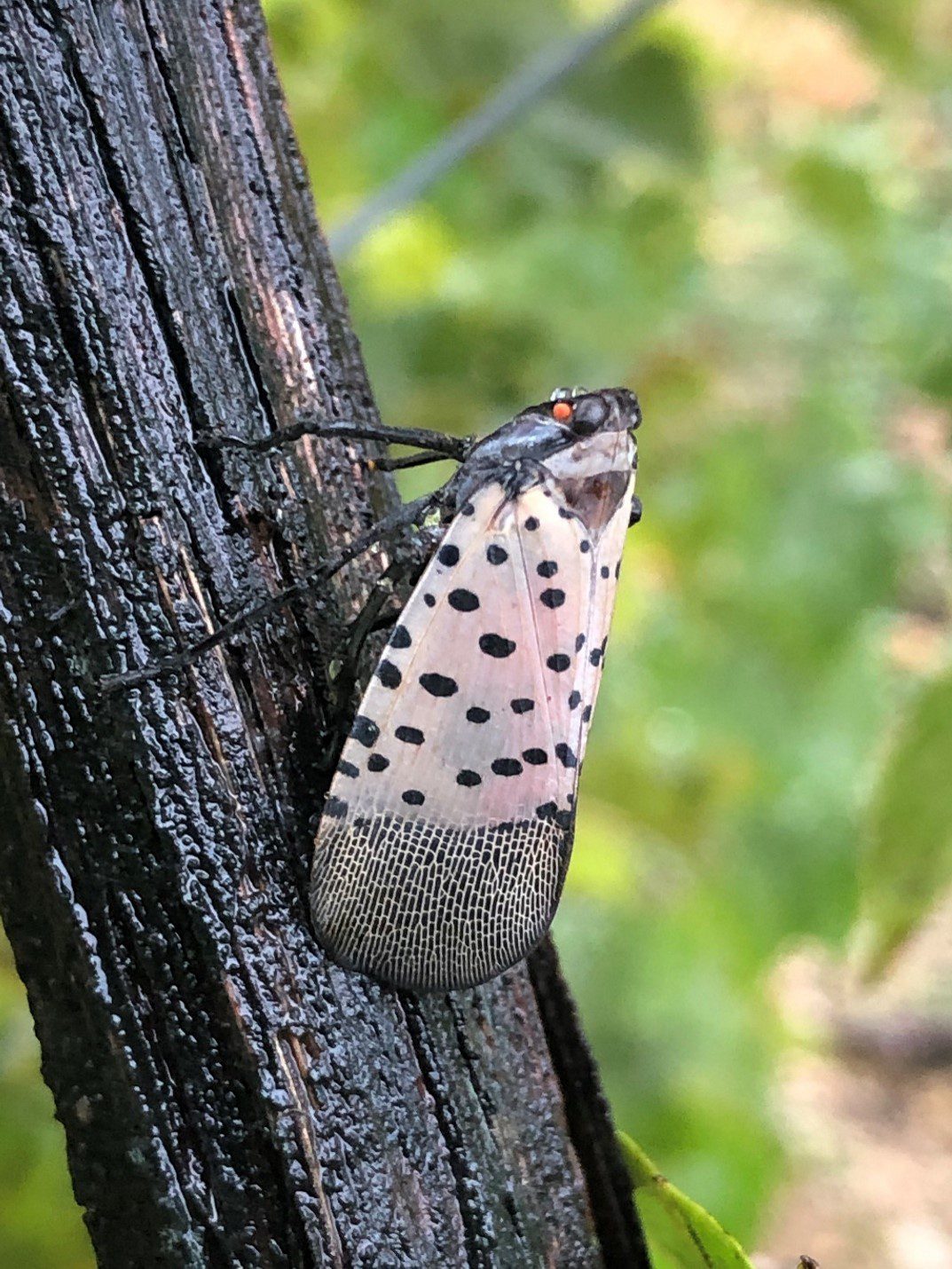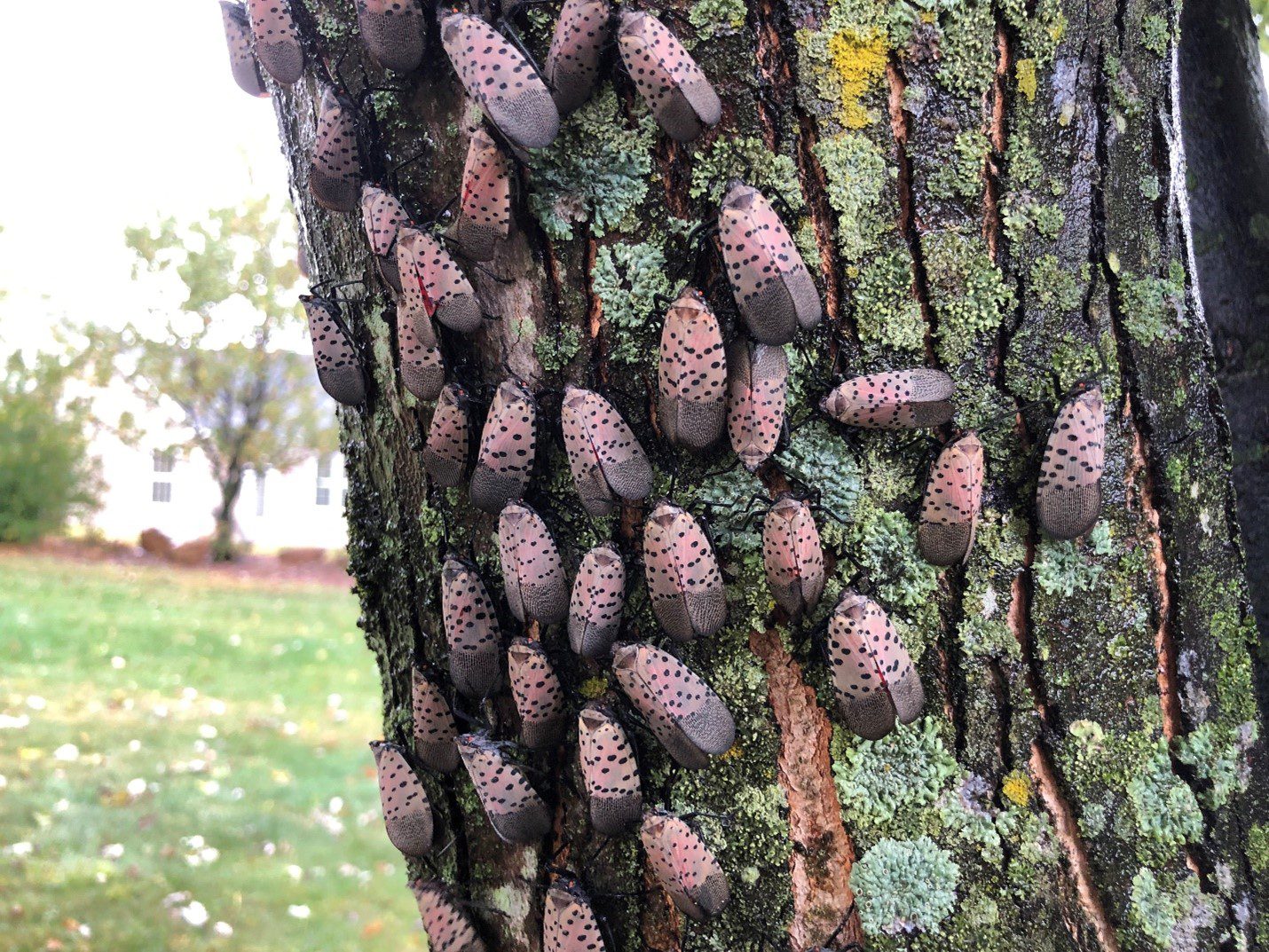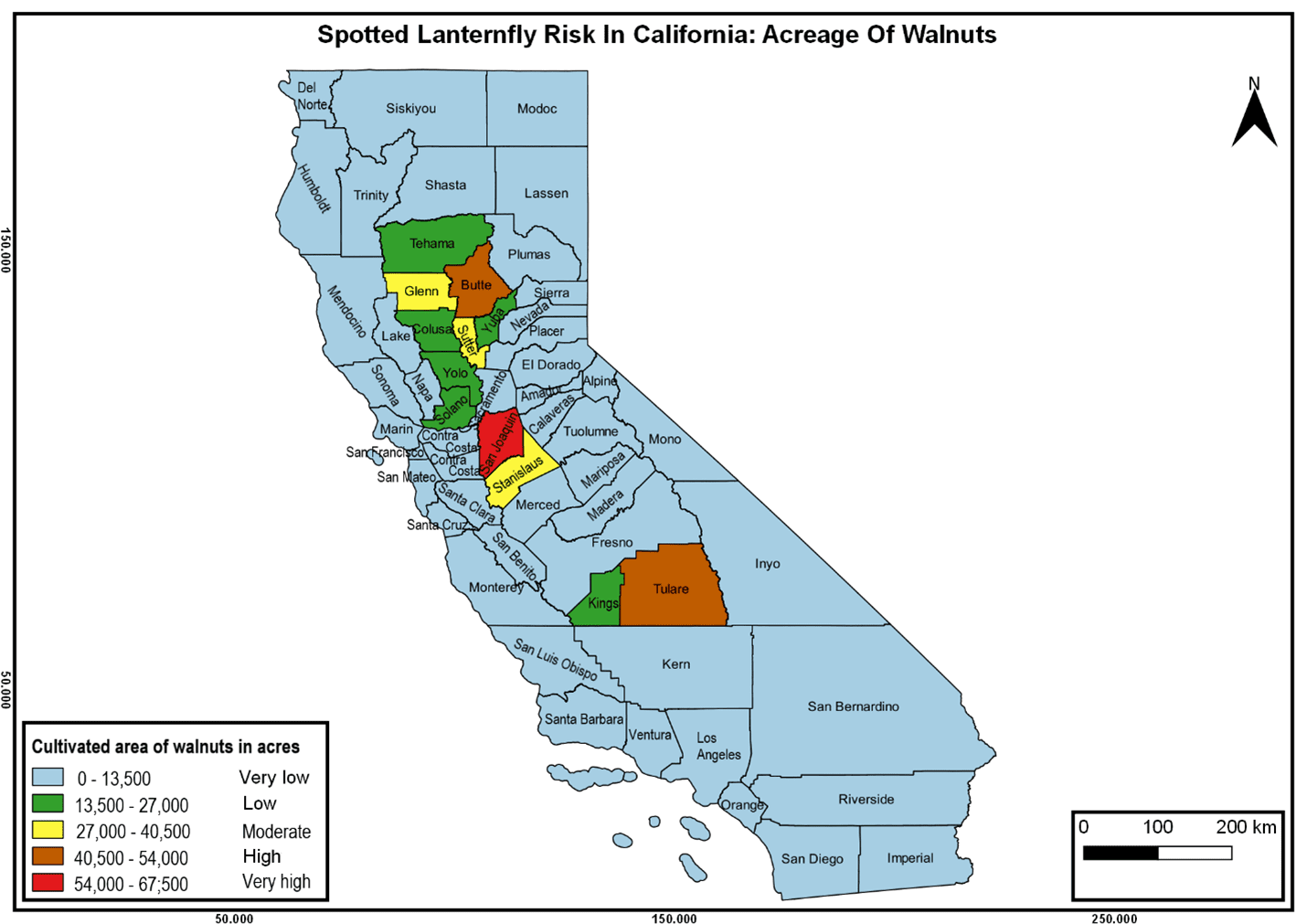
The spotted lanternfly (SLF), Lycorma delicatula, which is an invasive pest in many parts of the Eastern U.S. and is spreading westward, has multiple cultivated and wild hosts in California (Dara and Bocco 2021). The black walnut (Juglans nigra) and other Junglandaceae members are common hosts of SLF (Dara et al. 2015). The cultivated English walnut (Juglans regia) and the endemic California walnut (Juglans californica) are among the important hosts that could harbor SLF populations and are at risk if the pest invades California.
The extent of SLF risk to various cultivated hosts, potential economic losses and the distribution of wild and cultivated hosts that support SLF populations was determined by generating various maps using crop data from the state and various counties. This article focuses on the risk of SLF to walnuts in California to help prepare the growers and local communities for its potential invasion.
California is the leading producer and the sole national exporter of walnuts, which are the tenth-most-valuable commodity in the state with a value of $958 million (CDFA 2020). With some decline from the previous years, walnut production in 2021 is expected to be 670,000 tons from 385,000 bearing acres (NASS 2021). In many counties, such as Butte, Colusa, Glenn, Kings, San Joaquin, Solano, Sutter, Stanislaus, Tehama and Yolo, walnuts are grown in large acreages and are an important commercial crop.
Mapping the Risk Areas
Using the county crop reports, the SLF risk levels were determined as very low, low, moderate, high and very high for the acreage and value of walnuts within each county. The highest risk value within each parameter was used to determine the ‘very high’ category and 4/5, 3/5, 2/5, and 1/5 were used for high, moderate, low, and very low categories, respectively. In other words, 0% to 20% risk was considered very low, 21% to 40% as low, 41% to 60% as moderate, 61% to 80% as high and 81% 100% as very high for each measured parameter.
Data were entered into a spreadsheet and maps were generated using QGIS open-source cross-platform geographic information system application. These maps show the distribution of cultivated walnuts in various counties and the level of risk based on acreage, value and production volume.

What is Being Done?
Importing natural enemies from the native country of the invasive pest that are very specific to the target invasive pest and releasing them in the new area of invasion is one of the common approaches (known as classical biological control) in managing invasive pests. Although various species of imported biocontrol agents are currently under investigation, they don’t seem to be an immediate option due to some host specificity concerns. However, several researchers are working on various integrated pest management strategies to manage SLF.
The web site ucanr.edu/spottedlanternfly has links to maps, articles, videos and other SLF resources and will be periodically updated with relevant information.
Thanks to California Department of Food and Agriculture for funding the study to map the SLF risk-prone areas in California.
References
California Department of Food and Agriculture. 2020. California agricultural statistics review 2019-2020. (https://www.cdfa.ca.gov/Statistics/PDFs/2020_Ag_Stats_Review.pdf)
Dara, S. K. L. Barringer, S. P. Arthurs. 2015. Lycorma delicatula (Hemiptera: Fulgoridae): a new invasive pest in the United States. J. Integr. Pet Manag. 6: 20. (https://doi.org/10.1093/jipm/pmv021)
Dara, S. K. and R. C. Bocco. 2021. Spotted lanternfly risk in California: acreage, value, and distribution of various hosts. UCANR eJournal of Entomology and Biologicals. (https://ucanr.edu/blogs/blogcore/postdetail.cfm?postnum=50963)
National Agricultural Statistics Service. 2021. 2021 California walnut objective measurement report. United States Department of Agriculture. (https://www.nass.usda.gov/Statistics_by_State/California/Publications/Specialty_and_Other_Releases/Walnut/Objective-Measurement/202108walnutom.pdf)














